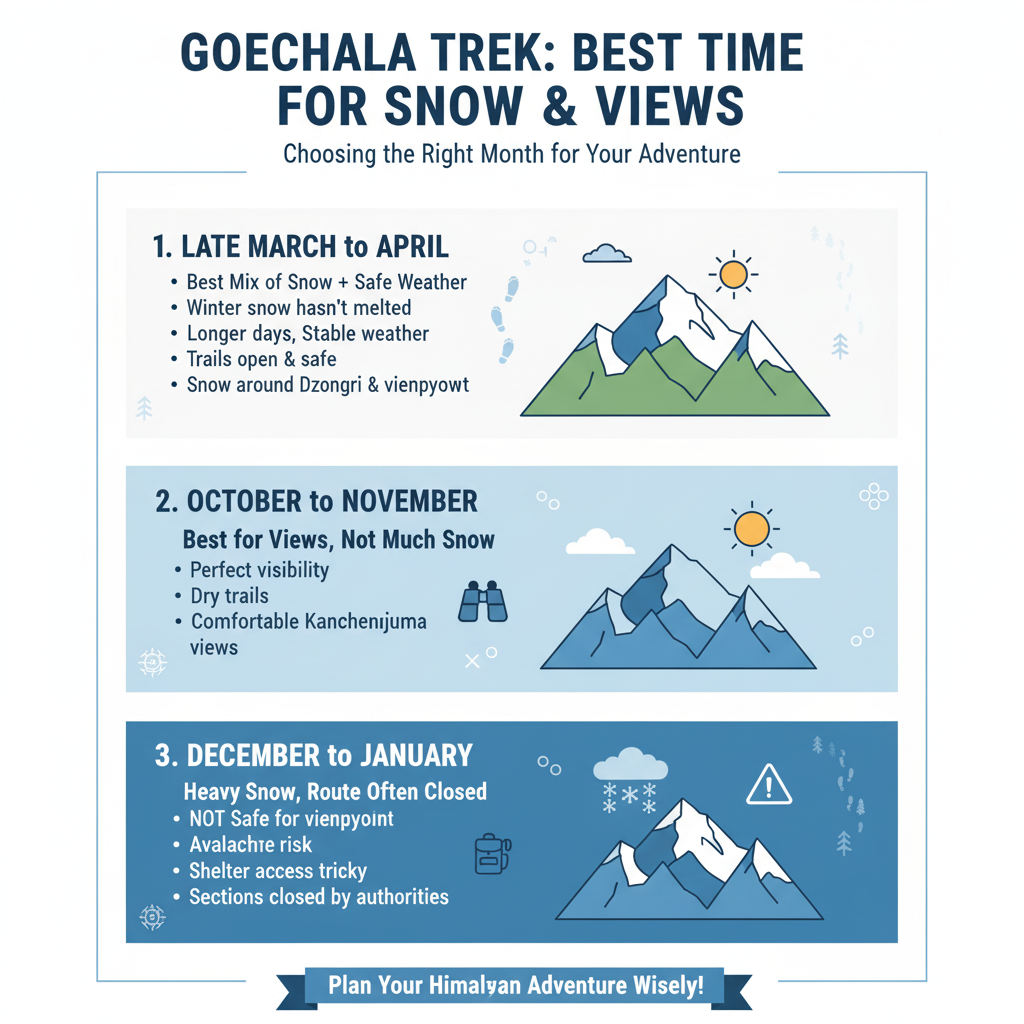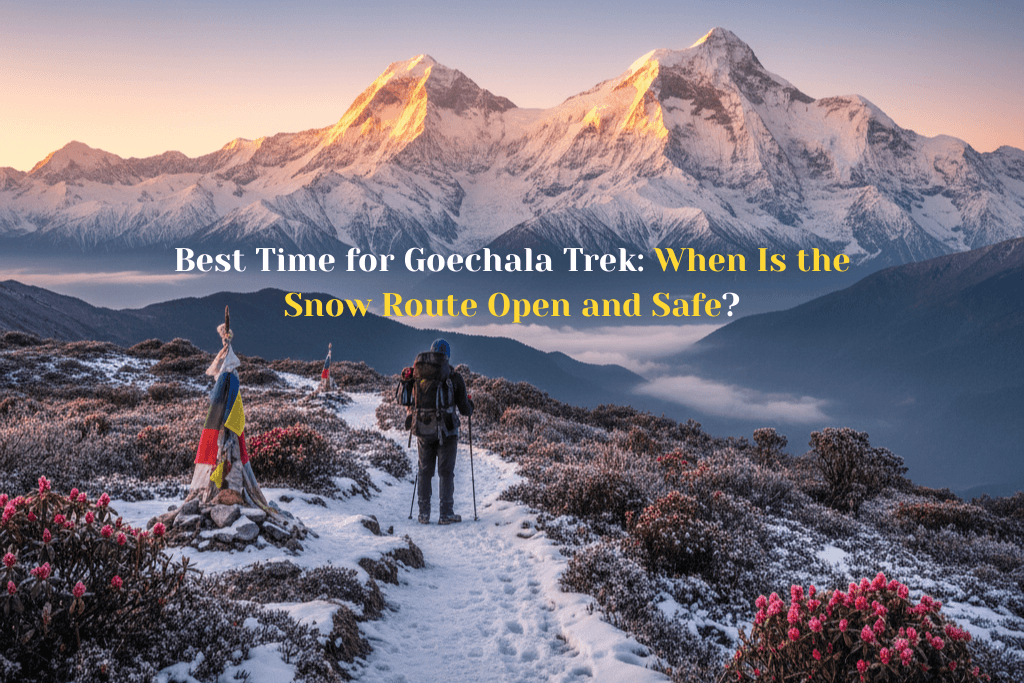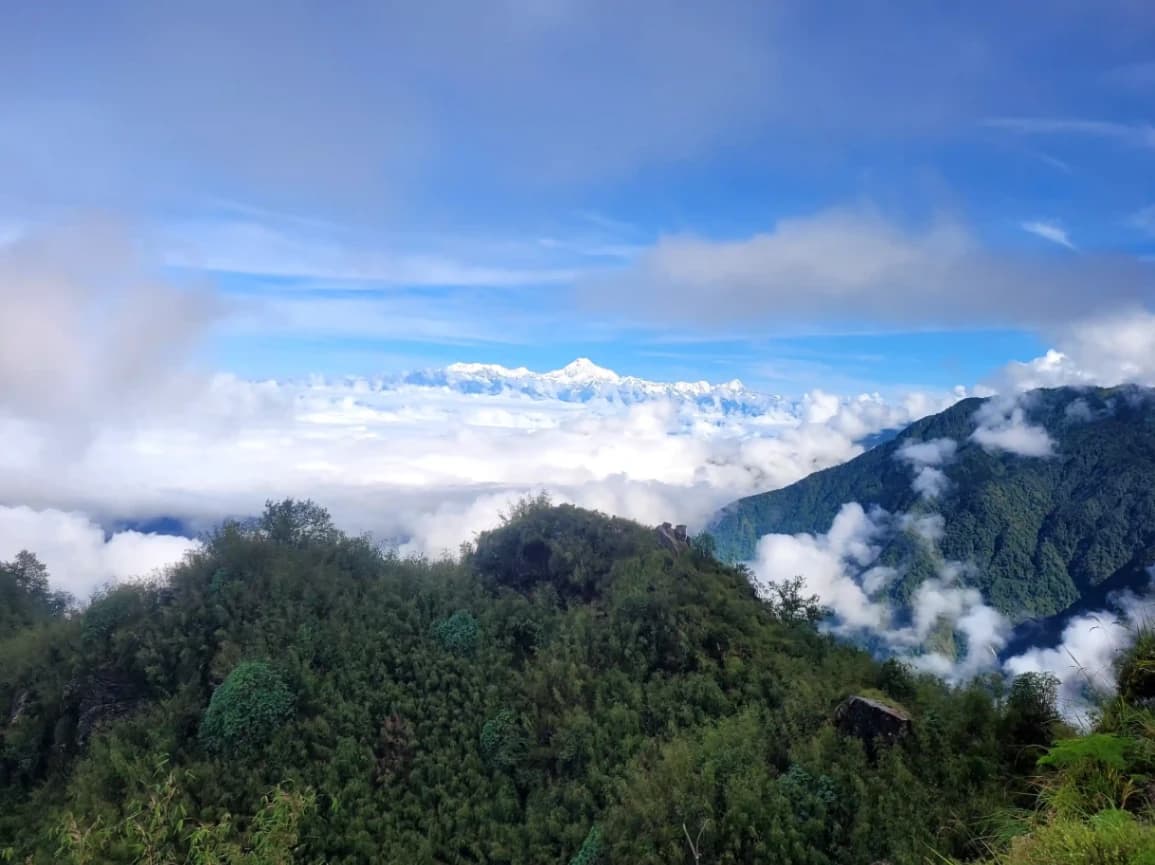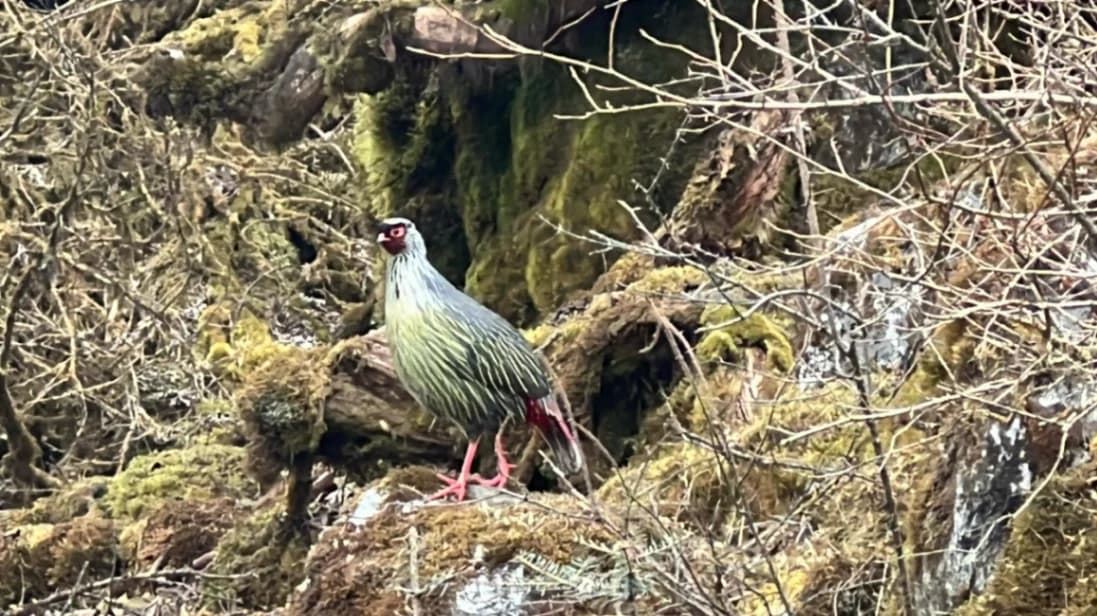If you’re planning a Himalayan adventure, knowing the Best Time for Goechala Trek can honestly save you from a lot of confusion. Let’s be real, Goechala is not a trek you wake up and decide to do. It needs timing, awareness, and a little bit of smart planning. And by the way, the route changes a lot depending on the season, especially when you’re expecting snow.
So here’s a chill and simple guide to understand the Best Time for Goechala Trek, especially if you want that perfect snow experience without risking safety.
Why Timing Matters for Goechala Trek
Let’s be honest, the Himalayas don’t behave like your city weather. One month can be calm, and the next can hit you with snowstorms without warning. That’s why knowing the Best Time for Goechala Trek is important. The trail passes through forests, high-altitude shelters, windy ridges, and areas where snow can pile up quickly.
So yeah, timing isn’t just about beauty—it’s about safety.
Best Time for Goechala Trek for Clear Snow Routes
A lot of people hope to see snow on this trek. And frankly, you can, but the trick is choosing the right month. Too early and there’s no snow. Too late and the route becomes unsafe. Here’s the honest breakdown:
1. Late March to April – Best Mix of Snow + Safe Weather
This period is one of the Best Time for Goechala Trek if you want snow on upper sections without extreme cold.
Why this time works well:
- Winter snow hasn’t melted completely
- Days are longer
- Weather is relatively stable
- Trails are open and safe for trekkers
You’ll find snow mainly around Dzongri and the final viewpoint zone.
2. October to November – Best for Views, Not Much Snow
Let’s be real, this is the Best Time for Goechala Trek for clear blue skies and crisp mountain views. If your goal is to see Kanchenjunga clearly, this season wins. But snow is rare.
Why people love this time:
- Perfect visibility
- Dry trails
- Comfortable daytime temperature
So yes, snow lovers may not enjoy this phase, but view lovers definitely will.
3. December to January – Heavy Snow, Route Often Closed
Frankly, this is NOT the Best Time for Goechala Trek if you actually want to reach the Goechala viewpoint. Snowfall starts piling up early, and by late December, the route beyond Dzongri is usually unsafe.
What happens during this period:
- Heavy snow
- Avalanche risk
- Shelter access becomes tricky
- Many sections get closed by authorities
So even though the winter vibes look attractive, it’s not a safe window.

Also read our Blog on Goechala Trek in Winter: Weather, Challenges, and Magical Views
When Is the Snow Route Actually Open?
Let’s keep it simple-most trekkers prefer a time when the snow route is open but still safe. Based on trail patterns, the snow route is usually:
- Open: Late March, Early April
- Partially Open: Mid-April
- Closed: December to early March
This is the realistic window for anyone wanting a snowy trek but not a dangerous one.
So the Best Time for Goechala Trek if snow is your priority?
Late March – Early April.
Weather Conditions Across Seasons
To understand the Best Time for Goechala Trek, here’s a quick breakdown of how each season feels:
Spring (March–April)
- Cold mornings
- Snow on higher sections
- Clear views
- Active rhododendron blooms
Autumn (Oct–Nov)
- Crystal clear skies
- Dry and stable weather
- Great for photographers
Winter (Dec–Feb)
- Extreme cold
- Heavy snow
- Route closures
Monsoon (Jun–Sep)
- Not recommended at all
- Landslides and slippery trails
Frankly, monsoon is not even an option.
Who Should Choose Which Season?
This makes choosing the Best Time for Goechala Trek easier:
Choose Spring if you want:
- Some snow
- Mild cold
- Blooming forests
Choose Autumn if you want:
- The best mountain views
- Dry, comfortable weather
- Clean trails
Avoid Winter if you want:
- Safe trekking
- Open viewpoints
- Easy trail access
Tips for Trekking During Snow Season
Since many trekkers hope for snow, here are some simple things to keep in mind:
- Wear proper layered clothing
- Carry microspikes if trekking in early April
- Leave early morning to avoid afternoon winds
- Stay hydrated even in cold weather
- Follow your guide’s instructions strictly
By the way, never push towards Goechala viewpoint if the route is closed.
How to Prepare for Goechala Trek in Snow Season
If you’re trekking in one of the Best Time for Goechala Trek windows, especially March–April, here’s the prep you need:
Physical Prep
- Daily 20–30 mins walking
- Light jogging
- Regular stretching
- Basic leg strengthening
Also check our Blog on Complete Goechala Trek Altitude Breakdown for Beginners
Mental Prep
Frankly, long trails need patience. Snow makes everything slower and slightly tougher.
For more details on planning your Himalayan adventures, check out our complete guide to the Goechala Trek.
FAQ
1. Which is the Best Time for Goechala Trek overall?
October–November for views, March–April for snow.
2. Is January good for Goechala?
No, the route is usually closed.
3. Can beginners attempt Goechala?
Yes, with fitness and a proper guide.
4. When does snow stay on the trail?
Mostly late March to early April.
5. Is monsoon safe for Goechala?
Not at all. Slippery and risky.
6. Which season has the clearest view of Kanchenjunga?
Autumn (Oct–Nov) wins easily.
7. Is the snow route open in February?
Usually no. Heavy snow blocks it.
Follow us on Facebook to stay updated about recent best offers.



























